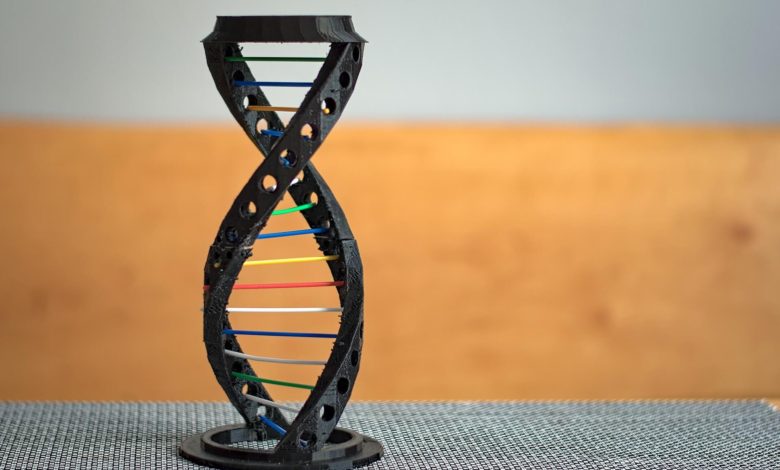Gene Knockout Method

Gene knockout; It is a molecular biology method used to study the function of genes by extracting a gene and observing its effects on a cell or organism. It can be achieved by deleting the gene completely, introducing mutations in the gene, suppressing the expression of the gene, or editing the gene in the mature organism.
Gene Knockout Methods
To create the artificial gene knockout organism, several methods are used to silence or remove the gene of interest. Gene knockout methods include:
- Gene silencing
- Conditional knockout
- Homologous recombination
- End of gene
- Knockout by mutation
Gene Knockout with Mutation
Gene knockout through mutation is usually carried out in bacteria. An early example of using this technique in Escherichia coli was applied by Hamilton et al in 1989. In this experiment, two consecutive recombinations were used to delete the gene. This study established the feasibility of removing or modifying a functional gene in bacteria. This method has since been developed for other organisms, particularly research animals such as mice.
Knockout mice are widely used to study genes with human equivalents that may be important for disease. A recent example of a study using knockout mice is the investigation of Xirp proteins in Sudden Nocturnal Death Syndrome (SUNDS) and the role of Cheng et al in Brugada Syndrome in the Chinese Han Population.
The researchers scanned the Xirp genes in people with the two syndromes and identified two gene variants that could be pathogenic. Using Xirp2 knockout mice, they learned that mouse hearts lacking Xirp2 had a number of abnormalities. This study allowed the identification of Xirp variants likely to play a role in SUNDS and Brugada syndrome, and to demonstrate the role of Xirp2 in heart function.
Gene Silencing
Gene silencing or RNA interference (RNAi) is a newer technology that has become popular for gene knockout studies. In RNAi, small interfering RNA (siRNA) or short hairpin RNA (shRNA) is used to inactivate messenger RNA for a particular gene. This effectively suppresses gene expression. Gene silencing using RNAi has been used to target genes involved in neurological disease, inherited disorders and viral infections, as well as oncogenes such as Bcl-2 and p53.
Conditional Knockout
Knockout methods using gene deletion have been powerful for studying genes not involved in early development. However, genes that are active during early development often cannot be eliminated without a lethal effect on the organism. Conditional knockout is one way to overcome this. The original conditional knockout method used a site-specific recombinase called Cre, which recombined short target sequences known as LoxP. Since then, other recombinases have been developed and used for conditional knockout studies.
Combining two of the previous methods, Kuhn et al describes a method in a 2010 article for inducing gene silencing in mice using Cre recombinase or doxycycline to control the expression of RNA (shRNA). The method resulted in reproducible production of knocked down mice.
Gene Editing
Gene editing systems such as zinc finger nucleases (ZFNs), transcription activator-like effector nucleases (TALENs) and clustered short palindromic repeat (CRISPR) at regular intervals are an emerging alternative to site-specific recombinases. These enzymes have begun to replace many basic methods in molecular biology such as cloning. Conditional gene knockout is another example where they have some advantages over the original tools.
Gene Knockout Process
Some processes need to be followed in the gene knockout method. These processes are as follows:
Choosing a gene for knockout: The first step in any of the genetic engineering experiments is to select the target, where the goal is a gene to study or understand its function. After that, some dry laboratory studies are carried out studying the structure, length and other parameters related to the gene of interest. Based on this, the most suitable plasmid for the experiment is selected. But before that, the gene of interest is identified and mapped on a chromosome.
Vector construction: A vector is a tool used to transfer the gene of interest or any other DNA sequence to target cells, usually a plasmid is used for this. A plasmid is the extrachromosomal DNA of a bacterium used for genetic engineering experiments. BAC- bacterial artificial chromosome vector, used for gene knockout experiments. Suppose a frameshift mutation is added to the DNA sequence that prevents protein formation.
It is the process of removing some ORFs, namely open reading frames, from the gene and inserting an altered gene into the BAC. More securely in this way, a marker DNA sequence is also added to confirm the results, usually an antibiotic resistance gene is used for this. However, some of the other important DNA sequences such as origin of replication, promoter sequence and recognition sequences are also inserted in the plasmid. Now the plasmid is ready for transformation.
Insertion into ES cells: Now using artificial methods such as electroporation, sonication or microinjection, the plasmid is inserted into the ES cells. Embryonic stem cells can divide faster and divide into any type of cell. ES cells have the power to transform into mature mouse tissues. Electroforation method is one of the best techniques used by scientists in gene knockout by inserting a gene into the cell under electric current, and now the ES cells are in the plasmid target cells.
If it finds the target gene, recombination occurs and a mutation is added to the target gene. In addition, a marker gene sequence is used so that along with the mutant gene sequence, the marker gene sequence is also inserted into the genome of transformed cells. The transformed cells are now grown into media containing neomycin so that cells containing the NeoR gene can grow. And differentiation can be made between cells containing NeoR and cells without the NeoR gene.
Confirmation of insert: When cells are grown under in vitro conditions, it is possible for some cells to be transformed or some cells not to be transformed. The addition can now be verified using the polymerase chain reaction. For this, DNA is extracted from cultured cells. A sequence of primers specific for the marker DNA sequence is used to achieve amplification. If amplicons are observed, cells are transformed, otherwise our experiment fails. Assuming that the ES cells have been successfully transformed, this can be called genetically modified cells.
Injecting into the embryo: Transformed cells are selected and placed in the developing embryo of the model organism. It is allowed to grow normally.
Model mouse selection: There are two types of cell populations in the embryo of the model organism, one wild type and the other modified (transformed) cells, this animal is called chimeric. The chimeric animal is genetically modified, in the next step it is mated with a normal animal producing offspring of two different genotypes, and another animal (as well as heterozygous) with one homozygous normal or homozygous altered genotype is obtained.
Conclusion: Now the gene knockout animal has been constructed and scientists can examine it to measure different parameters related to the gene of interest. Physical, biochemical or genetic parameters related to the gene can be examined. The results of the gene knockout can then be confirmed using the PCR amplification method.
How to Verify Gene Knockout
Verification of gene knockout is a crucial part of the whole experiment. Although many different methods are used to do this, one of the popular methods today is the polymerase chain reaction. The polymerase chain reaction is one of the commonly used methods and is the most reliable for most experiments. Here, two primer sets are used to confirm or confirm gene knockout. One primer set is designed from adjacent regions of the target sequence and the other primer set is designed for the marker gene sequence, ie the antibiotic resistance gene.
One of the important results of the experiment is that if the target gene is recombined, the antibiotic gene is transferred to the target genome. Therefore, our experiment is successful if we obtain the DNA band in the PCR reaction with the primer set complementary to the marker gene. On the other hand, after the target gene has been removed, the flanking primers specific to the gene of interest cannot be amplified and the DNA band cannot be obtained. However, wild-type DNA is used as a control reaction so that a DNA band can be obtained with primer set 1. After the amplification reaction is complete, the results are verified using agarose gel electrophoresis. The results of the PCR can be visualized on a 2% agarose gel.
Why Choose Mice for Gene Knockout?
Created to study the function of a gene, mice with an inactivated gene of interest are called knockout mice. Mice are used in genetic engineering studies and knockout studies because of the similarities between human and mouse genes. 99% of human and mouse genes are similar, so using mice for experimentation is a wise decision rather than directly using the human embryo. Because of the few ethical issues associated with human embryo studies, scientists use mice for gene knockout studies.





